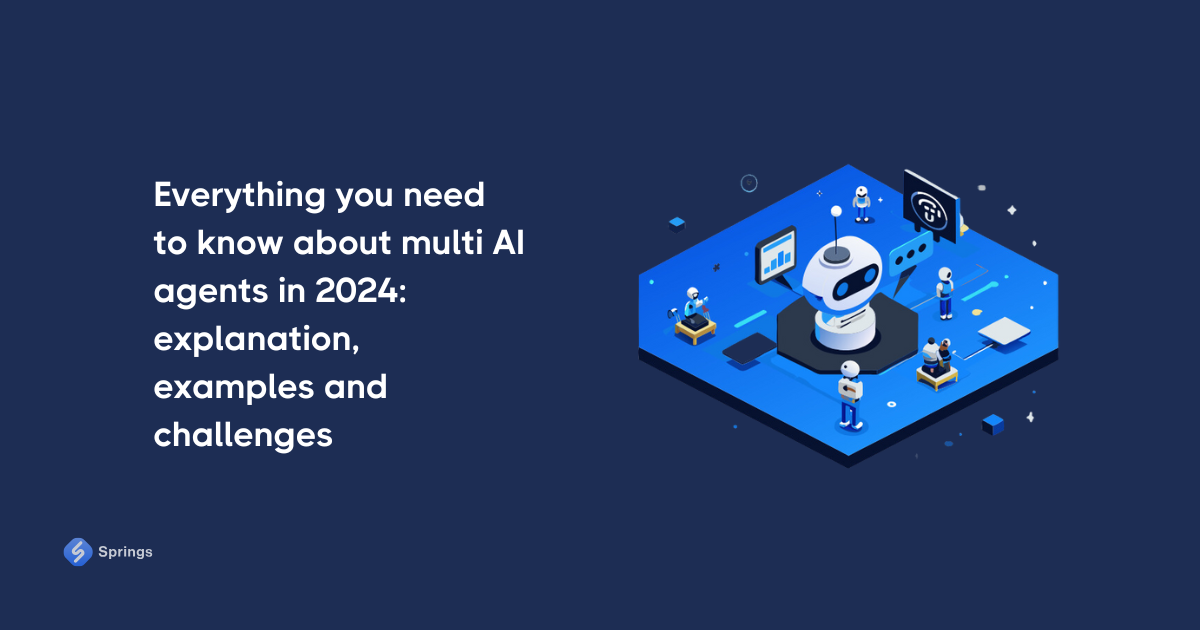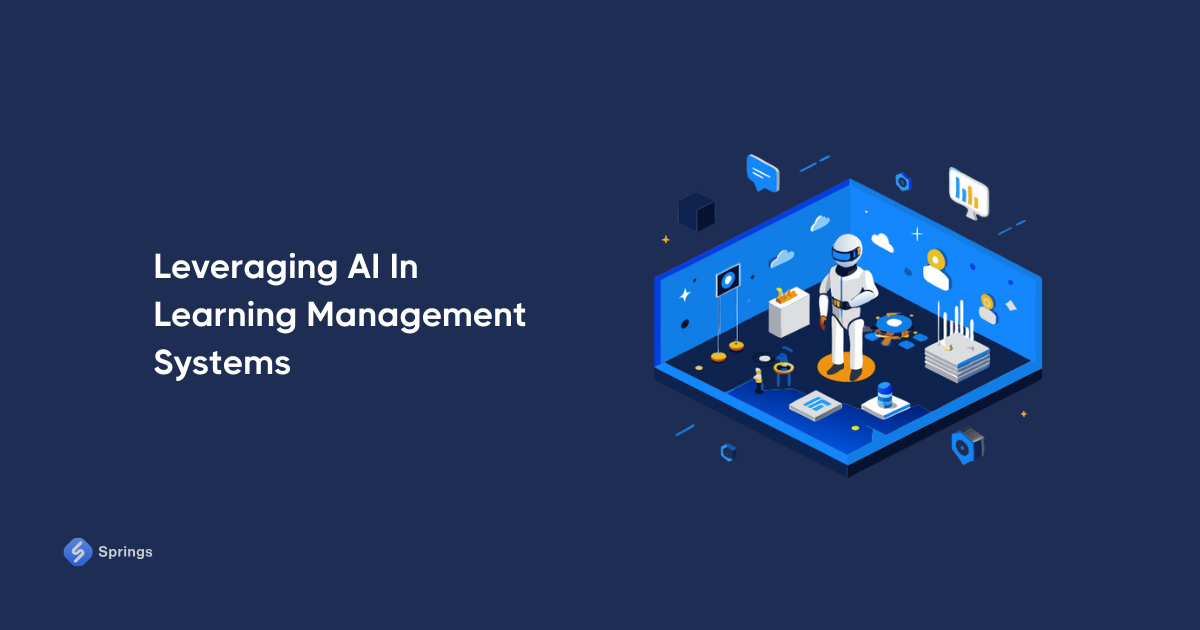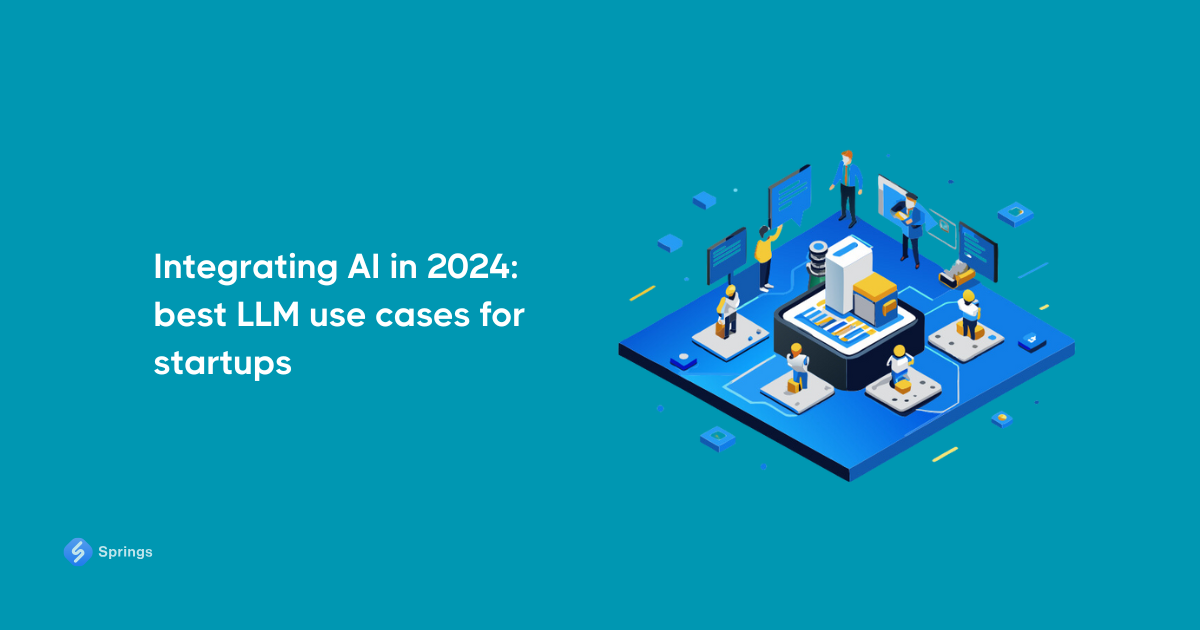The Evolution of Chatbot Intents: Everything you need to know
What are chatbot intents?
A chatbot intent refers to the underlying goal or purpose behind a user's message or query when interacting with a chatbot, especially when we talk about AI chatbots. In essence, it represents what the user exactly intends to accomplish through the conversation with the chatbot. So, this is actually what we call bot intent.
By identifying and understanding the intent expressed in a user's input, the chatbot can effectively interpret the message and provide an appropriate response. In other words, it helps chatbot not to fail with the requests it has received. Intents serve as a crucial component in natural language understanding (NLU) systems, allowing chatbots to engage in meaningful interactions and provide valuable assistance to users.
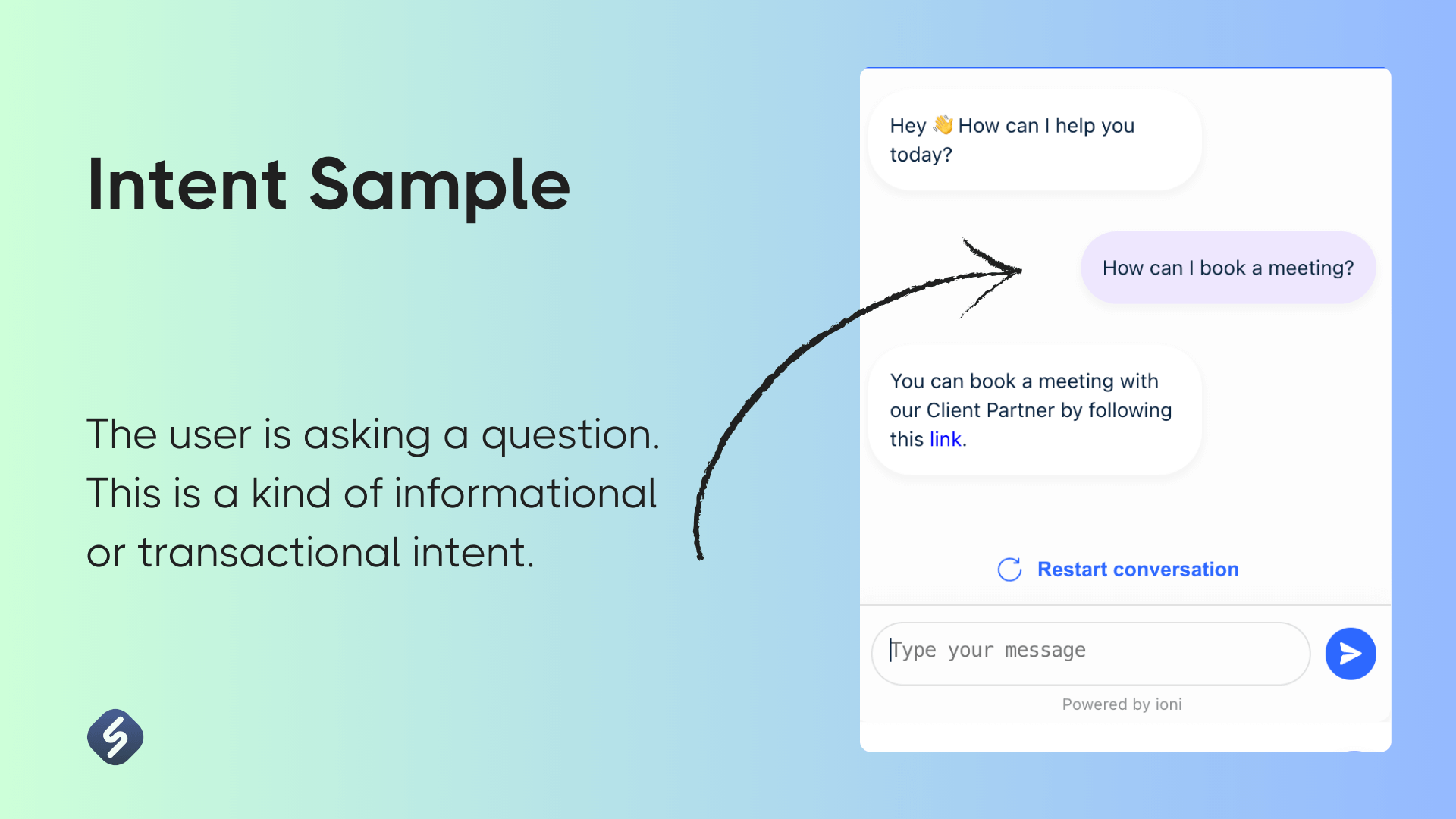
Chatbot intents encapsulate the specific goals or objectives behind users' messages or inquiries. They serve as a means of discerning users' intentions when engaging with a chatbot.
Overall, the correct understanding of chatbot intent helps a lot with further chatbot development and its further usage in different use cases.
How do chatbots identify intent?
For a better understanding of bot intent, we have to dive deeper into the logic of a chatbot. Natural Language Processing (NLP) enables chatbots to comprehend user messages, while LLM classification algorithms aid in categorizing these messages based on training data to provide accurate responses. You can learn more about the difference between LLM and NLP in our previous articles.
Intent classification has significantly transformed business operations, particularly in enhancing customer experience. By automating customer service tasks through intent classification, businesses can efficiently scale their operations and respond to customer needs more rapidly. This not only improves efficiency but also enhances overall customer satisfaction and loyalty.
Let’s have a look at the schema below:
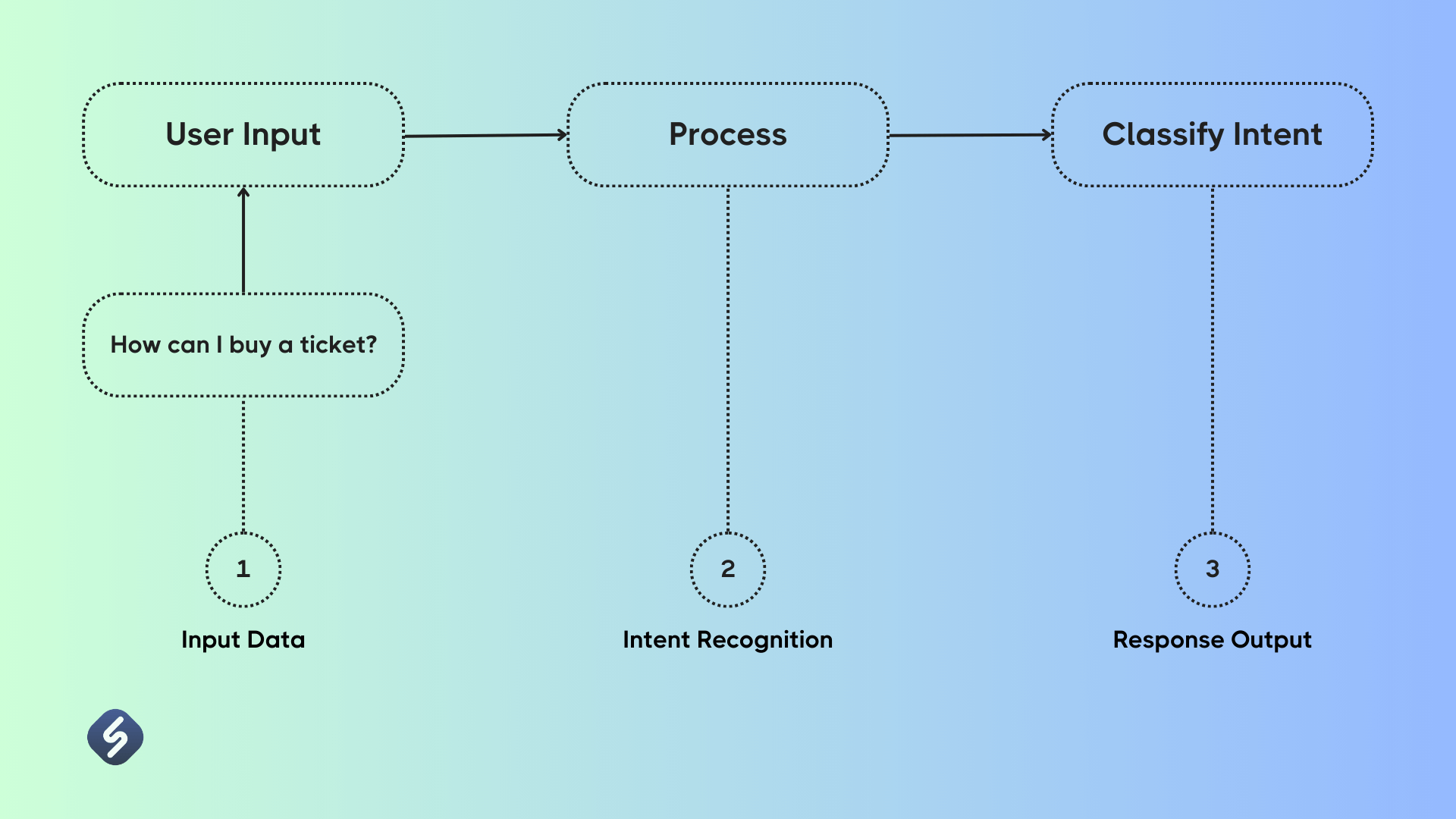
The essential steps for enabling meaningful conversations with chatbots include:
Preprocessing for Natural Language Understanding (NLU)
NLU involves organizing the user's unstructured input to facilitate understanding and analysis by the chatbot.
- Syntax analysis includes segmenting text into tokens, labeling tokens by their parts of speech, reducing words to their roots, and filtering out filler words.
- Semantic analysis infers the meaning of the input by considering word context and relationships within the text.
At the same time, NLU models employ supervised machine learning for syntax analysis and unsupervised machine learning for semantic analysis.
Chatbot Intent Classification
Classifying users' intentions is accomplished through classifiers, as different users may have varied queries.
- Classifiers are trained on labeled datasets, making it a supervised learning process.
- Classification methods include rules-based pattern matching, machine learning algorithms like decision trees, and deep learning approaches such as artificial neural networks.
Intent classifiers match NLU output to predefined labels in the training dataset, such as categorizing a user query about booking a flight under the label "book flight."
Response Generation
Intent based chatbot generates responses using predefined recommendations or real-time generation via LLM integration. Commercial applications often rely on pre-defined responses to ensure consistency and prevent unintended interactions.
Dialogues are crafted to achieve specific goals, such as gathering user information, offering product suggestions, or directing users to live agents for further assistance. Let’s have a look at the sample provided by Conversational AI for Real Estate article.
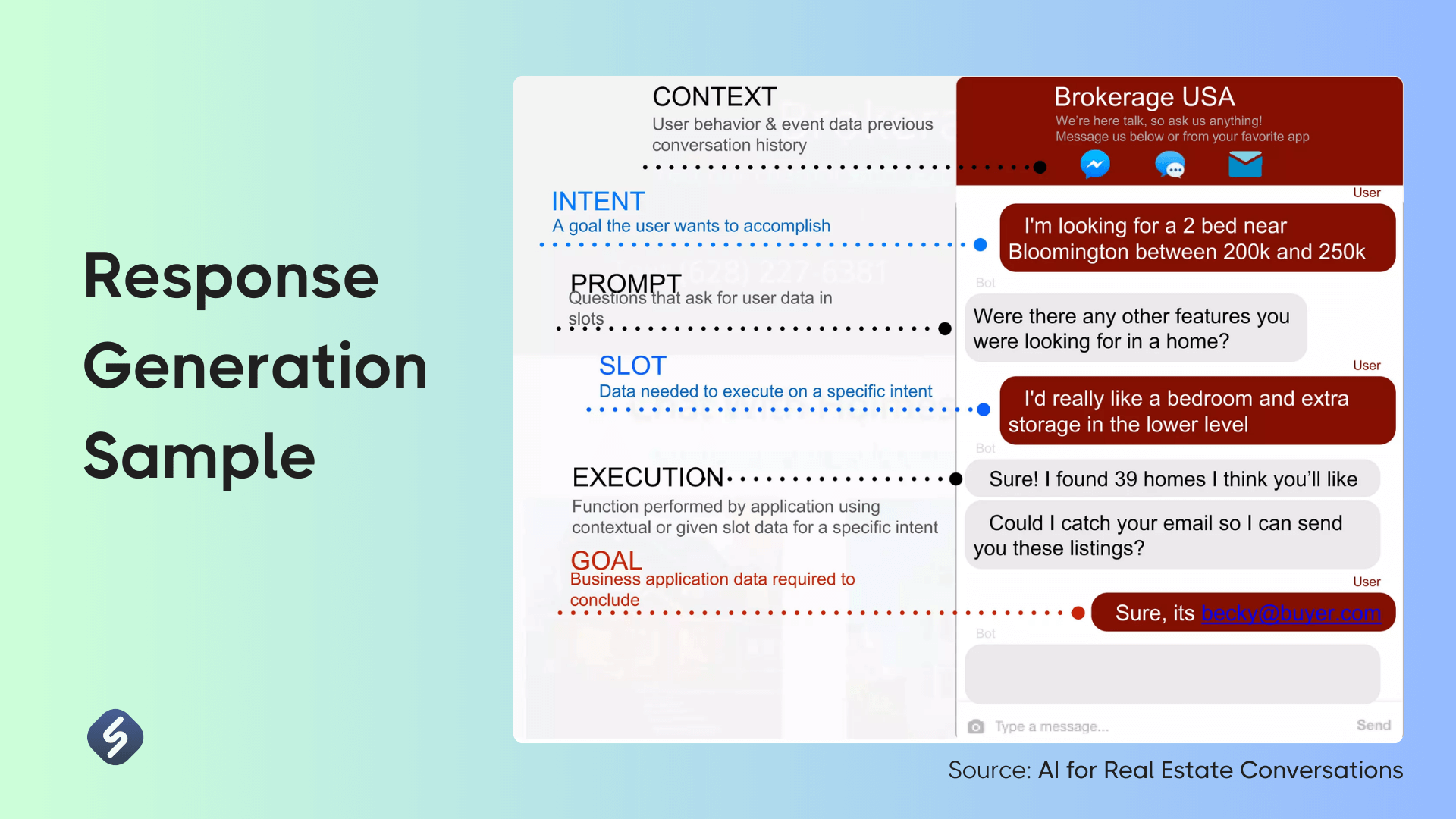
By following the steps mentioned above, AI chatbots can engage in meaningful conversations with users, accurately understanding their queries and providing relevant responses or assistance.
Types of chatbot intents
Chatbot intents encompass various categories, each serving a unique role in client interactions and enabling businesses to address diverse customer needs and preferences effectively.
Let's have a look at some of the most common types of chatbot intents that we may see on the AI market today.
- Informational Intent. Users seek information or answers to their queries, such as inquiries about store hours or product features.
- Transactional Intent. Clients aim to perform specific transactions or actions, such as making reservations, placing orders, or scheduling appointments.
- Navigational Intent. Customers require assistance in navigating, finding directions, reaching nearby locations, or exploring website sections.
- Support Intent. Users need help troubleshooting issues, seeking technical support, or resolving problems related to products or services. A great example of a chatbot with support intent is our chatbot builder for CS teams - IONI. Feel free to try it yourself.
- Feedback Intent. Clients wish to share their opinions regarding the chatbot's performance, user experience, or overall satisfaction with the brand.
- Small Talk Intent. Individuals seek a more casual conversation with the chatbot, engaging in discussions on general topics or sharing random comments.
- Confirmation Intent. Users seek confirmation or validation for a decision or action they are considering. This could involve confirming a purchase, verifying an appointment, or validating a choice made during the conversation.
- Account Management Intent. Users need assistance with account-related tasks such as account creation, password reset, or updating personal information.
- Subscription Intent. Users want to subscribe to newsletters, notifications, or updates from the company represented by the chatbot.
It's important to note that these examples represent only a fraction of potential intents, as the actual range may vary based on the specific purpose of the chatbot and the industry it serves.
The benefits of chatbot intent classification
We have already clarified what is intent classification and how intent-based chatbots work. Chatbot intent classification enables more relevant and helpful responses, improving user experience and satisfaction. It also facilitates faster response times and efficient routing, leading to streamlined operations and cost savings for businesses. Let’s dive deeper into those benefits.
Enhanced User Experience
According to Springs’ AI statistics, 56% of companies automate their customer user experience service with AI. So, we need to mention that accurate intent classification empowers chatbots to deliver more pertinent and supportive responses, thereby enriching the overall user experience.
Quicker Response Times
Another statistic says that around 74% of customers trust chatbots when seeking answers to simple questions. Intent classification is instrumental in swiftly discerning the purpose of user messages, enabling AI chatbots to address common queries with great efficiency.
Personalized Interactions
Through classification, chatbots grasp user preferences and tailor responses accordingly. This fosters valuable and personalized interactions, meeting the expectations of many customers who prioritize custom experience.
Efficient Routing
LLM API-based chatbots adeptly direct conversations to appropriate departments or resources by the correct use of intent classification. This streamlined approach can significantly improve customer support processes, reducing handling times.
Cost Efficiency
AI chatbot classification automates a considerable portion of customer interactions, diminishing the need for human intervention and potentially reducing operational expenses for businesses.
24/7 Availability
According to Invesp bot intent research, about 64% of internet users value the round-the-clock service offered by intent based chatbots. With intent classification, AI chatbots can provide accurate assistance and information to clients at any hour, enhancing brand accessibility and availability.
Overall, these benefits collectively elevate customer satisfaction, optimize operations, and enhance the efficiency of delivering personalized chatbot experiences. Importantly, they facilitate ongoing improvement over time, enhancing accuracy in assisting clients.
Challenges of chatbots’ intent recognition
Intent recognition is a crucial part when we talk about the creation of chatbot requirements needed for our business. While chatbots aim to emulate human-like conversations to meet user expectations, they meet many different challenges in accurately understanding the user's intent.
The key challenges of chatbots' intent recognition include:
- Complexity of Natural Language Processing (NLP). Natural language is diverse and nuanced, making it challenging for chatbots to accurately interpret user intent across different linguistic structures and expressions.
- Typos and Keywords Usage. Users often make typos or use keywords instead of complete sentences, complicating intent recognition for chatbots and potentially leading to misinterpretations.
- Limited Predefined Intents. Most of LLM chatbots rely on predefined intents in their training datasets, which may not cover all possible user queries or scenarios, resulting in misclassifications or incomplete understanding of user intent.
- Misunderstanding User Intent. Due to the limitations of predefined intents and variability in user input, chatbots sometimes may misunderstand user intent, leading to incorrect responses or failure to fulfill user needs effectively.
- Handling Complex Queries. Intent based chatbot may struggle to handle complex queries or multi-step interactions, particularly when the user's intent is not clearly set or changes throughout the conversation.
- Contextual Understanding. Understanding user intent requires considering contextual information, which can be challenging for chatbots, especially in dynamic conversational contexts.
- Domain-based Data. AI assistants, for instance, HR chatbots, may lack domain-specific knowledge or expertise, making it difficult to accurately interpret user intent in specialized or technical domains.
- Scalability. Ensuring accurate intent recognition across a wide range of user queries and contexts requires scalable LLM integration, which can be difficult to achieve, particularly in dynamic and evolving environments.
Addressing these challenges requires advancements in NLP techniques, improvements in training data quality and quantity, as well as the integration of context-aware algorithms and domain-specific knowledge.
Chatbot intent examples
While there are shared characteristics and similar things among chatbot intents, their variation can be influenced by factors such as industry domain and the specific expertise areas of businesses. Let’s have a look at chatbot intent examples among different domains.
Customer Success Intents
In the field of customer success and customer experience, customized chatbots have emerged as indispensable tools, offering efficient and personalized assistance to many customers.
Customized with specific intents, these intent based bots efficiently manage a range of tasks, including addressing common inquiries, facilitating order tracking and returns, and delivering real-time support to ensure a seamless customer experience.
Let’s dive deeper into some practical examples of intents commonly employed in the customer service industry:
Password Reset Intent:
User Query Example: "How do I reset my password?"
The intent here will be simple. The customer requires assistance with resetting their password. The chatbot recognizes the intent and guides the user through the process, offering step-by-step instructions or a password reset link to restore access to their account.
Order Tracking Intent:
User Query Example: "Where is my package? I haven’t received it yet."
In this scenario, the customer seeks to track their order. The chatbot identifies the intent, prompts for order details, and provides real-time updates on shipping progress and estimated delivery time, ensuring transparency and customer satisfaction.
Complaint/Replacement Request:
User Query Example: "I received a damaged product. How can I get a replacement?"
The user encounters an issue with a purchased item and seeks assistance for a replacement. Trained for this intent, the chatbot guides the user through initiating a replacement request, gathering necessary information, and providing instructions for return or exchange.
Billing and Payment/Invoice Intent:
User Query Example: "I have a question about my invoice. Can you help?"
The user seeks clarification regarding their invoice or payment. Upon recognizing this intent, the AI chatbot addresses the user’s billing concerns, explains charges, and assists with payment-related inquiries.
Support Ticket Creation:
User Query Example: "I’m experiencing technical issues with the app. How can I get help?"
Here, the customer requires technical assistance for app-related issues. The chatbot identifies the bot intent, offers troubleshooting guidance, and can create a support ticket to connect the user with a human agent for further assistance.
These examples illustrate how chatbot intents are effectively utilized in the customer service industry to address common inquiries and provide timely assistance and support. Feel free to try our AI chatbot for the CX teams and experience it yourself.
eCommerce intents
AI Chatbots and virtual assistants play a crucial role in the ecommerce sector, serving as assistants that offer personalized help and recommendations to customers. Usually, these bots are equipped with a diverse set of intents tailored to enrich the online shopping journey.
Here are some of the most commonly intent examples in the e-commerce domain:
Product Inquiry Intent:
User Query Example: "Can you provide more details about this laptop?"
The customer seeks additional information about a specific product. The e-commerce chatbot identifies the intent and responds by furnishing detailed specifications, pricing, and availability, empowering the user to make an informed purchasing decision.
Order Status Intent:
User Query Example: "Where is my order? I haven’t received it yet."
The customer wishes to inquire about the status of their order. The chatbot recognizes the intent and retrieves relevant order details from the database, offering real-time updates on shipping progress and estimated delivery time to ensure transparency and customer satisfaction.
Return and Refund Intent:
User Query Example: "I received a damaged product. How can I request a refund?"
The user encounters an issue with a purchased item and seeks guidance on return and refund procedures. Upon recognizing this intent, the chatbot assists in initiating the return process, along with instructions on packaging, shipping, and refund procedures, facilitating efficient issue resolution.
Discount and Promotion Intent:
User Query Example: "Do you have any promotions or discounts at the moment?"
The customer is interested in learning about ongoing promotions or discounts. Upon identifying this intent, the chatbot shares information regarding current sales or discount codes, encouraging users to take advantage of available deals.
From product inquiries to order tracking and customer assistance, eCommerce chatbot intents seamlessly handle different kinds of tasks providing the shopping experience for customers.
Banking intents
Banking AI chatbots are equipped with a tank of intents developed to elevate the banking experience for clients. Here's a glimpse into some of the most prevalent chatbot intent examples in this domain:
Account Opening Intent:
User Query: "Can you help me with opening my bank account?"
With this intent, chatbots facilitate customers in initiating the process of opening new bank accounts. Clients can ask for their details, such as name, address, and identification, through a conversation with the chatbot, thereby streamlining the account opening procedure and eliminating the need for physical paperwork.
Account Balance Inquiry Intent:
User Query Example: "What’s my current account balance?"
Customers commonly utilize chatbots to ascertain their account balances. The bot retrieves the pertinent data from the bank’s system, furnishing clients with real-time updates on their account balances, and enhancing convenience and accessibility.
Transaction History Intent:
User Query Example: "Can you show me my recent transactions on my credit card?"
Chatbots seamlessly retrieve transactional data from the relevant account, presenting customers with comprehensive details including transaction dates, amounts, and merchant names.
Money Transfer Intent:
User Query Example: "Send $100 to John Doe’s account"
The AI chatbot initiates money transfers between accounts or to needed recipients. Clients can instruct the chatbot to execute transactions from their account. The banking AI chatbot securely executes the transfer within the bank’s systems, ensuring a seamless and secure transaction process.
These banking intents enable chatbots to efficiently manage a spectrum of tasks, delivering streamlined assistance to customers and enhancing their overall banking experience.
The Future of Chatbot Intent
Chatbots have been extremely improved day by day. For example, today Meta has upgraded its AI chatbot with its newest Large Language Model, Llama 3, and it is now running it in the search bar of its four major apps, Facebook, Messenger, Instagram, and WhatsApp across multiple countries. We may see similar news almost every day and I am sure the Generative AI industry will not stop growing for at least the next 5-10 years.
The future of AI chatbots and chatbot intent holds promising advancements such as contextual understanding, multimodal interaction, emotion recognition, predictive intelligence, integration with IoT devices, augmented intelligence, and continuous learning.
Another important point is that the cost of AI development will be reduced soon due to the new technologies and the variety of open-source competitors to such giants as OpenAI or Google.
The chatbot intent developments will aim more to enhance user experience, drive innovation in customer service, and transform the way we interact with technologies. As artificial intelligence continues to evolve, chatbots will play a pivotal role in shaping the future of communication and customer engagement, especially in small companies and businesses.
Overall, the growth of chatbot intent technology will lead to more personalized, intuitive, and efficient interactions, revolutionizing the way businesses and large enterprises can engage with their customers and users interact with technology.

